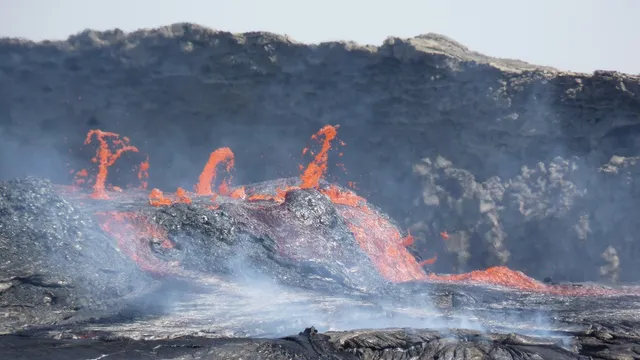
Scientists uncover hidden mud volcano spewing methane in Barents Sea
2025-06-25 23:05- Researchers identified a new mud volcano in the Barents Sea during an exploration expedition.
- The Borealis Mud Volcano is emitting mud and methane from deep underground, suggesting geological activity.
- This discovery enhances understanding of Earth's processes and highlights the ecological importance of underwater habitats.
Express your sentiment!
Insights
In a remarkable discovery, Arctic explorers uncovered a significant geological phenomenon in the Barents Sea, located about 70 miles south of Norway's Bear Island. They discovered a gigantic crater believed to have formed at the end of the last Ice Age, approximately 18,000 years ago. Within this crater, the researchers identified the Borealis Mud Volcano, situated around 400 meters underwater. This volcano is actively emitting mud and methane from deep within the Earth's crust, providing a unique insight into the planet's geological processes. The expedition was co-led by Stefan Buenz from UiT The Arctic University of Norway, highlighting the thrill and excitement of exploring the unexplored seabed. The crater’s dimensions are impressive, measuring approximately 300 meters across and 25 meters deep, and it supports a vibrant underwater ecosystem, consisting of diverse marine life such as sea anemones, sponges, starfish, corals, and crustaceans. This biodiversity thrives on the flanks of the carbonate crusts formed thousands of years ago. The discovery is particularly significant as it opens a window into the Earth's interior, allowing scientists to gather valuable information about past environments and the evolution of subsurface liquids. Previous research has shown that similar mud volcanoes serve as vital indicators of geological activity and environmental change. The only other known mud volcano in Norwegian waters, Håkon Mosby, was discovered in 1995 and lies much deeper at 1,250 meters. The revelation of the Borealis Mud Volcano not only enhances our understanding of such systems but also offers clues regarding the behavior of methane, an important greenhouse gas that influences the global climate. Additionally, the exploration team noted the ecological significance of the crater, which is a unique refuge for fragile marine species, disconnected from the impacts of human activities such as trawling. The expedition underscores the continued importance of underwater exploration in uncovering the mysteries of our planet and contributes to our environmental and geological knowledge, as researchers strive to understand the full diversity of processes beneath our oceans.
Contexts
Mud volcanoes, geological formations resulting from the expulsion of mud, water, and gases from the Earth's crust, play a unique role in shaping the marine ecosystems in which they are often situated. These formations can create localized habitats that support diverse and unique communities of organisms. Mud volcanoes are typically found in areas where tectonic activity is prevalent, and their presence can significantly influence the surrounding marine environment. The fluid-rich materials expelled during eruptions can alter the physical and chemical characteristics of the seawater, contributing to changes in local biogeochemical cycles. The emergence of nutrient-rich sediments may enhance productivity in the affected regions, attracting a variety of marine life and fostering a dynamic ecosystem around these geological features. The impact of mud volcanoes on marine ecosystems extends beyond merely providing habitat. They can serve as crucial sites for biodiversity, often supporting specialized species that have adapted to the unique conditions created by the expelled materials. The influx of hydrocarbons, for instance, can sustain chemosynthetic communities, which rely on chemical energy rather than sunlight. These communities not only enhance the local biodiversity but can also be indicators of the health and changes occurring within the marine environment. Moreover, the biological interactions among species in these environments can lead to unique food webs, significantly differing from adjacent areas where mud volcanoes are absent. However, mud volcanoes are not without their challenges. The release of hydrocarbons and other gases can pose environmental risks, including the creation of anoxic conditions if not countered by local biota. Furthermore, mud volcanoes can disrupt the existing marine ecosystems through sudden eruptions, potentially leading to habitat destruction and the displacement of local species. Researchers must carefully monitor these sites to understand their dual role as both facilitators of ecological diversity and potential threats to local biomes. This monitoring is essential, especially given the increasing frequency of such geological events due to climate change and human activities that may influence geological processes. In conclusion, mud volcanoes represent a complex interplay between geological and biological processes that enrich marine ecosystems. As sources of unique habitats and centers of biodiversity, they play a vital role in ecological health and resilience. Understanding their impacts is crucial for marine conservation efforts and highlights the intricate relationships that exist within marine environments. Continued research into the effects of mud volcanoes on marine ecosystems will not only aid in understanding natural processes but also assist in managing the potential risks associated with these dynamic geological phenomena.